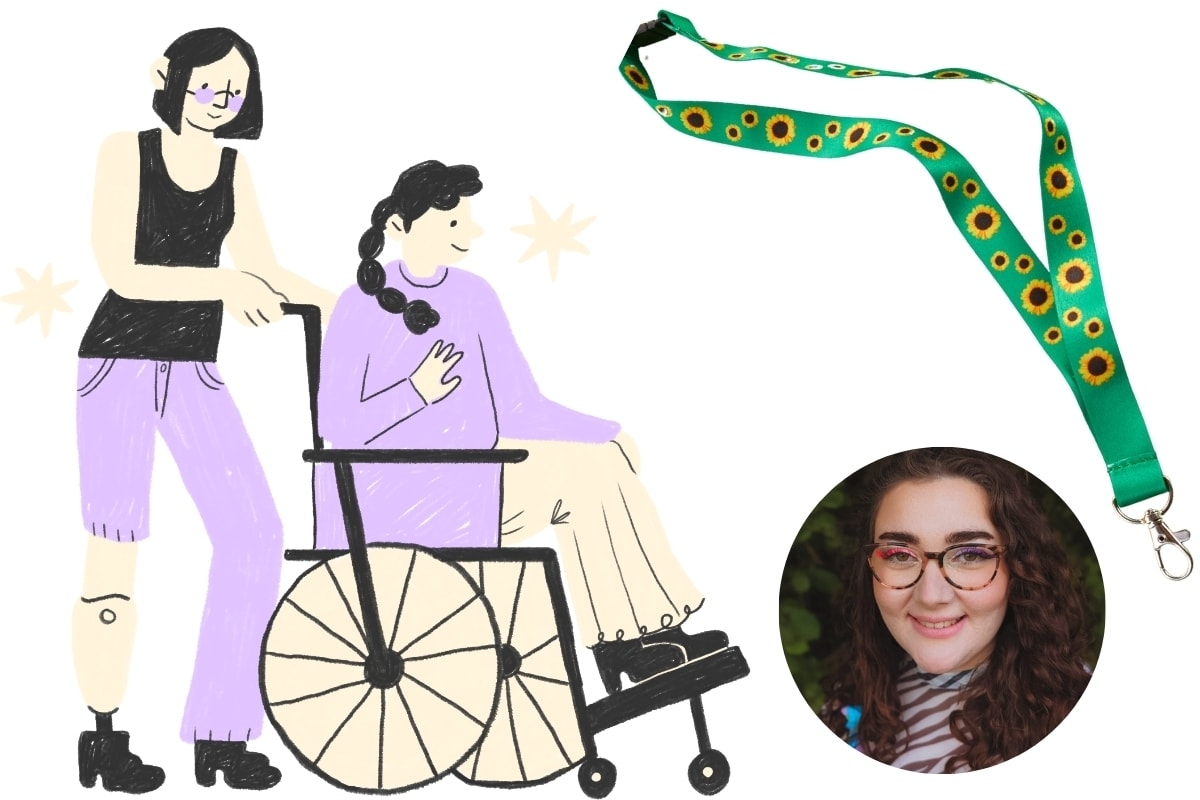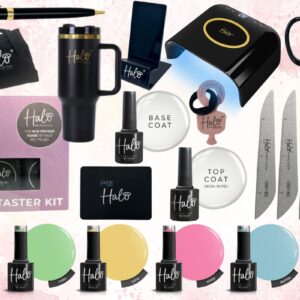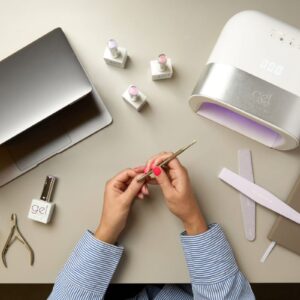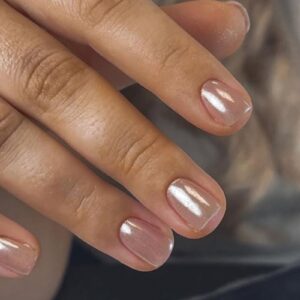
How to navigate accessibility needs in the nail salon
By Abi Hassan | 16 May 2024 | Expert Advice, Feature

With research from P&G finding that only 4% of beauty and personal care companies worldwide cater for physical disabilities, Abi Hassan, owner of Canterbury-based salon, Hot Wheels Nails, explores ways nail businesses can effectively meet the accessibility needs of staff and clients.

I have personally faced many challenges relating to my disability as a nail technician, and have spoken to other professionals as well as my clients about their struggles with accessing nail treatments. I have navigated adjusting my work to my health needs, which has taken time, experimentation and lessons learnt.
Disabilities are so vast in their differences, but it’s important to start the conversation on ways we can support techs and clients in the salon setting, and how these would benefit their work or treatments.
I began my journey as a nail technician whilst working through some serious health concerns, and consequentially I had access to professionals who helped me find ways to manage my time and energy levels, effectively enabling me to run my own business today. Whilst I have been extremely lucky in having that support to get started, I still face troubles daily that are mostly not seen by others or spoken about.
Personally, I have found that completing a set of nails takes a longer amount of time and my capacity for taking clients is significantly lower than other techs I have connected with. This has often led to difficult feelings and doubts in my ability, despite reassurance from other nail techs and hearing my clients speak about how they love their time in my salon.
What is accessibility?
By definition, accessibility means ‘the quality of being able to be reached and easily understood or appreciated’. For nail techs and salon owners, this is incredibly important when working with clients. Another definition is ‘being easy to obtain or use’, and while we often go out of our way to make our services wonderful for a variety of clients, there is often a group of people who are excluded from the wonderful work we do.
After speaking with a group of disabled clients, I want to lay out some key factors to consider when working with and for those needing adaptations to make their chance to experience treatments truly accessible. It is incredibly important to open up and continue conversations about exclusion, isolation and anxiety.
Finding strategies that work
Needs and requirements vary from person to person.
This goes back to open communication with staff and clients: starting conversations, asking and truly listening to what your clients or employees might need, and working towards meeting these needs. Similarly, when self-employed or working from a home salon, it’s important to consider your needs and ways in which resources and those around you may help you work alongside meeting your individual needs.
Some common concerns faced by those with disabilities can relate to timings and deadlines, exclusion and social isolation, practical difficulties with accessing buildings and making the space work, and changes in ability. It’s vital to reflect on the difficulties faced and be innovative as to how to best support clients and employees where possible, and be honest when it isn’t.
Facing changes in ability
For some people with disabilities, their capacity may fluctuate with flare ups in their conditions, meaning accessibility requirements may vary with these fluctuations.
When working with someone with a fluctuating disability or chronic illness, it is important to take the time to communicate regarding their needs and what helps them at these times. My health conditions are chronic, meaning they are long-lasting, and my ability to work at my best can fluctuate. I manage this by pacing myself and not taking on more than I can manage.
An employer might support their employee by ensuring they do not overwhelm a tech with an unreasonable workload, set reasonable expectations and allow for pacing and rest breaks.
Issues with exclusion and isolation
It’s important to consider that there are many ways a disabled tech could be excluded, either in attending events, award shows or in-person training.
Techs could be excluded from a salon due to physical barriers or environment. Salon owners should consider their space and difficulties a tech working in the salon may face. Reflect on both physical, tactile and sensory difficulties, such as having level entry into the salon and workspace, quiet spaces and sufficient room for mobility aids or equipment. Following this, where possible, seek to resolve these issues and if you cannot, be transparent about this.
By supporting disabled nail techs, beauty businesses and salons open the door to a wider pool of talent. Furthermore, creating an inclusive space within the nail technician industry contributes to changing societal perceptions of disability.
Raising awareness
Showcasing successful examples of disabled individuals excelling in their craft means that the industry becomes a catalyst for challenging stereotypes and breaking down preconceived notions.
Highlighting the achievements of disabled individuals not only fosters a sense of empowerment, but prompts a broader societal shift towards recognising and appreciating diverse talents.
Businesses that champion diversity are likely to attract a more varied clientele – I have found this to be true in my work. Using the insight I have from my health conditions and being open with clients, within the confides I feel comfortable and being appropriate and relevant, I have been able to provide services and treatments for clients who have otherwise been unable to access nail and beauty treatments due to inaccessibility.
Suggestions for supporting clients with disabilities
Remember that there is not a one-size-fits-all solution for physical and invisible disabilities. In my experience, particularly with invisible disabilities, it is best to be guided by the client as to their individual needs.
Neurodiversity
- Check in with the client’s sensory comfort, e.g. lighting, noise, strong smells, touch/pressure.
- Allow for comfort breaks for the client to move around – avoid sitting still for prolonged amounts of time.
- Use reduced pressure, as the client may have heightened sensitivity.
- Provide support around decision-making.
Anxiety
- Offer quiet appointments with no pressure to speak.
- Allow the client to play their own music or podcasts.
- Allow a friend/family/support person.
- Offer one-to-one appointment environments where possible.
Hearing loss
- Face the client directly.
- Ensure good lighting, meaning your face can be seen clearly when speaking.
- Don’t shout, as this can distort words/a person’s ability to lipread.
- Allow additional time for a thorough consultation at the client’s pace.
Intellectual disability
- Allow additional time for a thorough consultation at the client’s pace.
- Do not patronise or assume a client’s capacity to communicate/make their own decisions.
- Allow a friend/family/support person.
Neurological disability
- Allow additional time for a thorough consultation at the client’s pace, and ensure you seek information about how best to support them if any symptoms arise, e.g. seizures, tic attacks.
- Consider sensory input that could trigger symptoms, e.g. lighting, noise, strong smells.
Physical disability
- Provide level access entry: flat entrance to the building/a ramp.
- Provide room for mobility aids.
- Ensure bathrooms are accessible, with grab rails, an emergency cord and room to manoeuvre mobility aids.
- Ask the client before attempting to support them. Do not push somebody’s wheelchair or move them without prior verbal consent.
Visual impairment
- Fully introduce yourself.
- Ask the client how they like to be guided.
- Ask permission before guiding/supporting the client.
- Inform the client of any steps/changes in environment.
- Create a suitable space for any support animals/aids.
Click here to read Abi’s personal experiences as a disabled nail technician.
Follow Abi on Instagram.
Originally published 10 February 2024.

Read the latest issue









